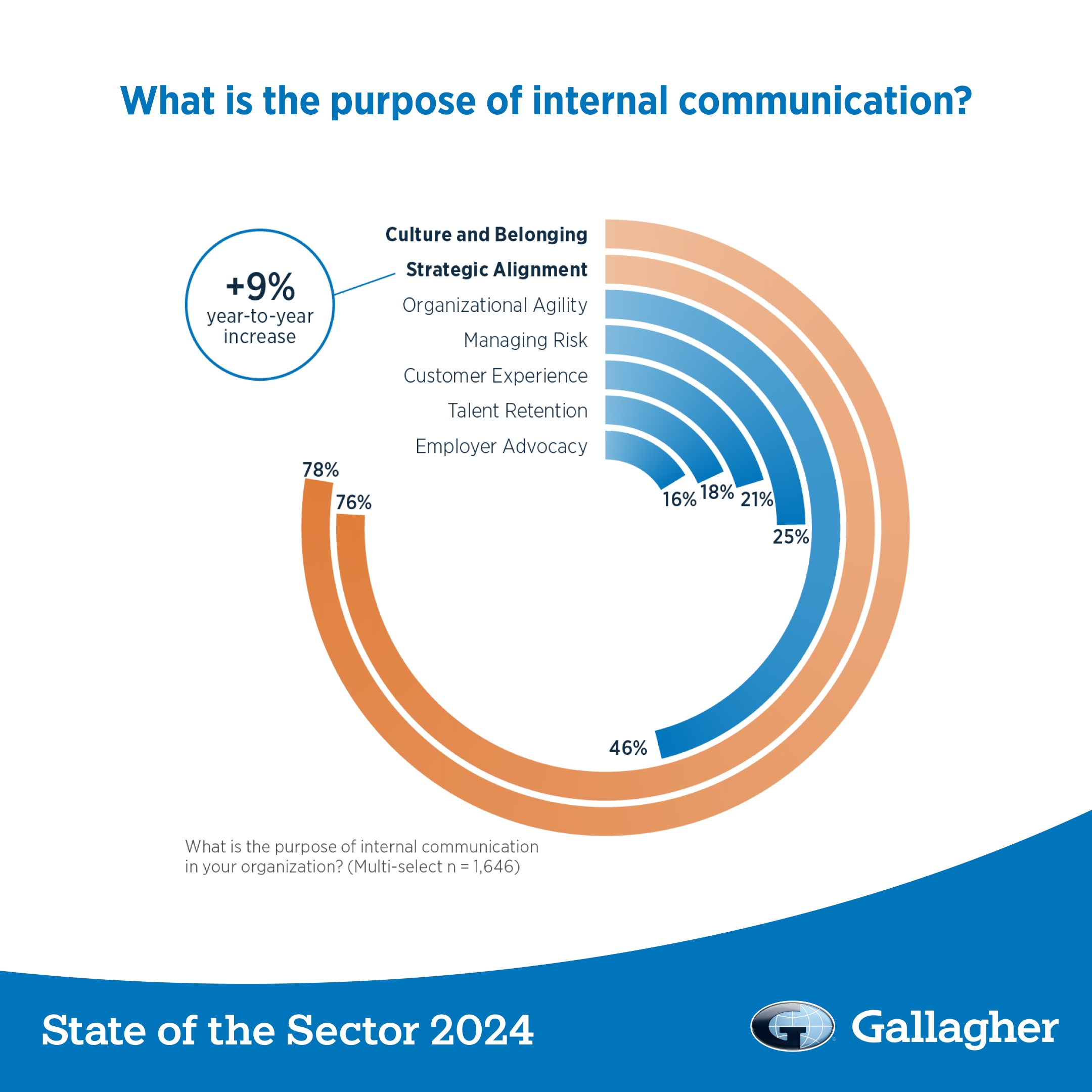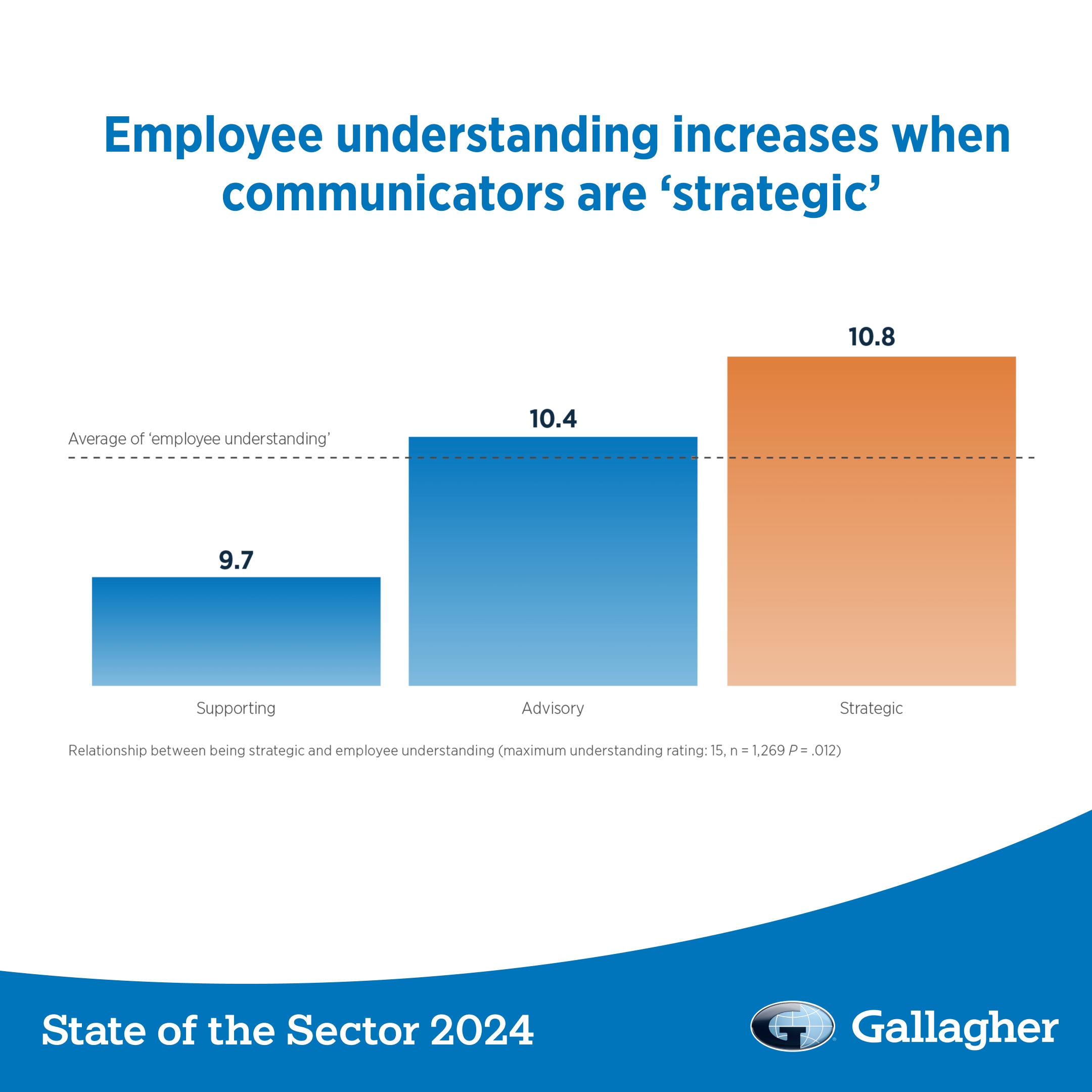Why Are We Here? And Other Answers from Gallagher’s State of the Sector Report
By
— February 8th, 2024

Why are we here? Don’t worry, I’m not having an existential crisis. This is one of the many questions Gallagher’s State of the Sector report helps me understand each year.
The latest report, released today, is the 16th installment of what has become the definitive report for internal communication and HR pros across Europe and North America.
I was lucky enough to get a sneak peek of the 2024 report, joining an expert panel—Andy Macleod, from Comma Partners, Jennifer Sproul, President of the Institute of Internal Communication, and Rayna Miller, Communications Director at Sodexo—to discuss the findings.
Redefining the Role of the Communicator: Insights from Gallagher's State of the Sector
So…Why Are We Here?
More than 2,300 professionals answered the survey, and when asked about the purpose of internal communication, the results were reassuring.
The top two results were culture and belonging (78%) and strategic alignment (76%—a 9% year-on-year increase).
It’s worth noting that respondents could choose three (unranked) options, so these may not have been everyone’s top choice—but they are certainly the most prominent.
This year, 82% of respondents who report into an internal communication department chose culture and belonging as their purpose, while 86% chose strategic alignment. Respondents who stated they report into HR, however, were more evenly split with twice as many selecting “managing risk” as their core purpose.

The Role of the Communicator: Strategic, Advisory, or Supportive?
Is the role of the communicator strategic, advisory, or supportive? According to the report, it depends on the subject matter.
For instance, when it comes to strategy, vision, purpose, employee recognition, or values, behaviors, and culture, the majority of people report acting in a strategic capacity.
When it comes to HR and operational areas, such as embedding new regulations, career paths, and ways of working, people report acting more in a supportive or advisory capacity.
Crucially, the report reveals that strategic communicators are more likely to use measurement data to support their campaigns than those in advisory or supporting roles. The results indicate that employee and broader organizational understanding improves when communicators take a more strategic approach.
Here’s another reassuring trend from the report—when communicators are strategic, employee understanding improves.
The topics where communicators stated they had a “strategic” role were more likely to be understood by employees at a “good” or “excellent” level when compared to topics communicated at an advisory or supporting level.

Also, communicators are more likely to use their measurement data effectively when they’re strategic. Communicators who used measurement insights as evidence of value, or to prove return on investment to leaders were much more influential.
Here are two stats that really jumped out to me:
- 47% of strategic communicators are using measurement to influence leadership
- Manager performance ratings were higher when communicators were “strategic”
Challenges and Priorities
Something I love about this report is the comfort it brings.
This is particularly true for the “barriers to success” section. I always come away and feel as though we’re all in the boat together—fighting the good fight and facing similar challenges.
Those challenges this year include a lack of time and capacity, disengaged colleagues, insufficient budget, poor channels, and a lack of analytics/measurement.
Despite this, only 5% of communicators say that developing a business case for more resources is among their top three priorities for the year ahead.
When it comes to priorities, the top two remain the same as 2023. Engaging employees on purpose, strategy and values takes top spot—with 69% of communicators reporting this as their number one priority.
Not even close, but still coming in second is refreshing or building an internal communications strategy (39%), with enhancing leadership visibility (30%) climbing two places to third.
Other trends included:
- Enhancing people manager communications (30%) remain a priority for comms professionals—this nut is still in need of cracking
- Deskless and non-wired employees rose in prominence as a barrier to success, jumping up three spots from 2023
- Staff are disengaged, burnt out, and have no capacity for information, so it is really hard to get your message across and absorbed
Learn More
The report also includes AI (of course), and channel effectiveness, change and transformation, measurement, employee listening, manager accountability, and communicator wellbeing, which was great to see included.
Keen to know more? Of course you are—check out the full Gallagher report here.
You can also register for our webinar on February 15, to gain additional insights from Chris Lee, VP of Employee Experience & Communication at Gallagher, and Heather Bicknell, Poppulo’s Product Marketing Director—as they’ll be digging into numerous aspects of the report.








